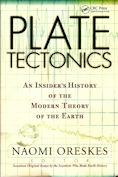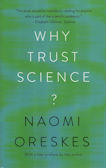Can anyone today imagine the earth without its puzzle-piece construction
of plate tectonics? The very term, “plate tectonics,”
coined only thirty-five years ago, is now part of the vernacular,
part of everyone’s understanding of the way the earth works.
The theory, research, data collection, and analysis
that came together in the late 1960s to constitute plate tectonics
is one of the great scientific breakthroughs of the twentieth century.
Scholarly books have been written about tectonics,
but none by the key scientists-players themselves.
In Plate Tectonics, editor Naomi Oreskes has assembled
scientists who played key roles in developing the theory
to tell—for the first time and in their own words—the stories
of their involvement in the extraordinary evolution of the theory.
The book opens with an overview of the history of plate tectonics,
including in-context definitions of the key terms
that are discussed throughout the book.
Oreskes explains how the forerunners of the theory, Wegener and du Toit,
raised the questions that were finally answered thirty years later,
and how scientists working at the key academic institutions—Cambridge
and Princeton Universities,
Columbia University’s Lamont Doherty Geological Observatory,
and the University of California-San Diego’s Scripps Institution
of Oceanography—competed and collaborated until the theory coalesced.


